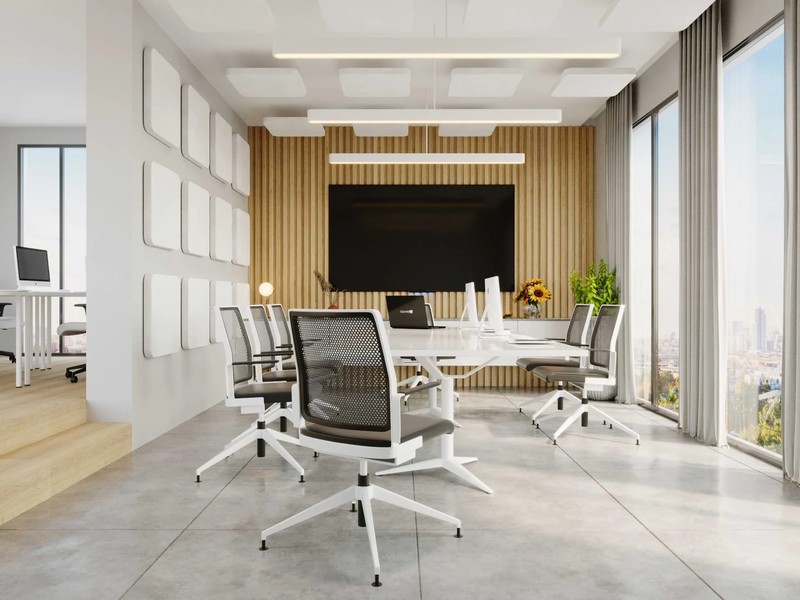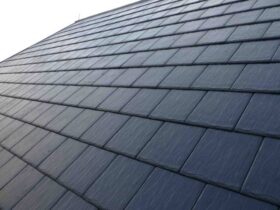How Do Sound Absorbing Panels Work?
Sound absorbing panels, also known as acoustic panels, are designed to reduce noise by absorbing sound waves rather than reflecting them. When sound hits a surface, it can either be reflected, absorbed, or transmitted. Acoustic panels absorb sound waves, particularly high and mid-frequency sounds, helping to reduce echo and reverberation within a room. These panels are typically made from soft, porous materials like foam, fibreglass, or fabric-wrapped insulation that allow sound waves to enter and dissipate within the material, effectively dampening the noise. They’re commonly used in places where sound clarity is important, such as home theatres, recording studios, or offices with open-plan layouts.The Role of Aesthetics: Style vs. Substance
With the rise of modern interior design, a sound absorbing panel are often marketed as both functional and stylish, with options available in a wide range of colours, shapes, and patterns. These panels can look like decorative wall art, blending seamlessly into a room’s aesthetic. But does their visual appeal affect their actual sound control capabilities?Aesthetic Considerations:
- Variety of Designs: Many panels are designed with aesthetics in mind, allowing them to double as decorative pieces. They can come in modern geometric patterns, art-inspired prints, or even bespoke designs that enhance a room’s look.
- Seamless Integration: Some people prefer acoustic panels that match the colour scheme or design of the room, making them virtually invisible while still providing acoustic benefits.
Effectiveness Considerations:
- Material Matters: No matter how good they look, the core material of a sound-absorbing panel is what determines its performance. Dense, high-quality materials like fibreglass or foam perform better at absorbing sound than thin or purely decorative panels.
- Coverage Area: To be truly effective, panels must cover a sufficient portion of the room’s surface area. Stylish panels that only cover a small section may not provide enough sound absorption to make a noticeable difference, especially in larger spaces.
- Placement: Aesthetic preferences might lead to suboptimal placement of acoustic panels. For instance, placing panels in highly visible but less effective spots (like behind furniture) might compromise their ability to absorb sound.
Do Sound Absorbing Panels Deliver on Their Promise?
The short answer is yes but with caveats. Sound absorbing panels can be highly effective at improving sound quality in a room, reducing echo, and making conversations or recordings clearer. But their effectiveness depends on several key factors:1. The Type of Noise
- Sound absorbing panels excel at reducing mid- to high-frequency sounds, such as voices or the sound of instruments. However, they are less effective at blocking low-frequency noises like bass from music or the rumble of traffic outside.
- If you’re looking to block external noise or prevent sound from escaping a room, sound-absorbing panels alone won’t do the trick—you’d need proper soundproofing materials, which typically involve denser barriers like mass-loaded vinyl, insulation, or specialised drywall.
2. Room Size and Layout
- The size of the room and the amount of sound being generated are critical. In a small home office or recording booth, a few well-placed panels can make a significant difference. But in larger spaces like a living room or open-plan office, you’ll need more coverage for noticeable noise reduction.
3. Placement is Key
- The placement of the panels plays a major role in how effective they are. Panels should be installed on walls or ceilings where sound waves are most likely to bounce, such as opposite speakers or along the sides of a home theatre setup.
- Installing panels in areas of heavy reflection (like corners or flat, bare walls) can make a room sound clearer, reducing the echo or ‘flutter’ that can occur when sound bounces between hard surfaces.
Are They Just Decorative?
While it’s clear that sound-absorbing panels can improve a room’s acoustics, it’s also true that some products focus more on their decorative qualities rather than acoustic performance. Panels with beautiful designs may look great but could compromise on effectiveness if the material or size isn’t sufficient for actual noise reduction. Here’s where the difference between acoustic treatments and decorative sound panels becomes important:- Acoustic treatmentsare designed specifically with sound control in mind, using high-quality materials like dense foam or fibreglass to absorb sound waves effectively.
- Decorative sound panelsmay use thinner, less effective materials. While they look great, their sound-absorbing properties may be secondary to their aesthetic appeal.











